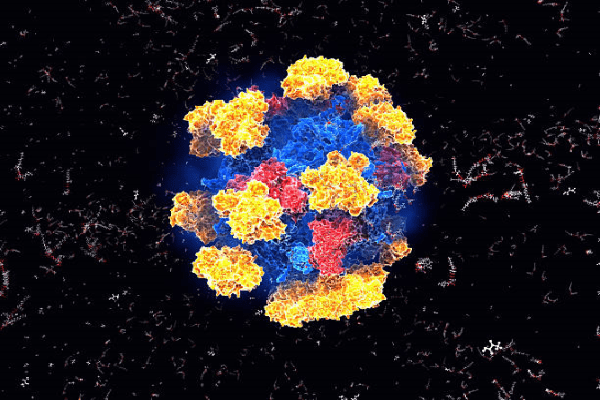Enzymes >>>> Enzyme functions
Enzyme functions.

There are only about two thousand enzymes in the body , each of which performs its own unique function, catalyzes one biochemical process.
The generally accepted classification divides all enzymes into six classes according to the type of catalyzed reaction:
- Oxidoreductases - are involved in several types of redox reactions, where they transfer hydrogen, electrons and catalyze biological oxidation. (oxidase, peroxidase, dehydrogenase).
- Transferases - transfer groups of atoms, methyl, carboxyl, amino, sulfo, formyl and phosphoryl groups.
- Hydrolases - are involved in hydrolytic degradation. Representatives of this group are named according to the type of bond being broken (peptidase, glycosidase, amylase, esterase, lipase, phosphodiesterase, phosphatase, urease).
- Lyases - cleave groups (for example: CO2, H2O, NH3) from the substrate molecule (catalyzed starting material) in a non-hydrolytic way (decarboxylase, aldolase, lyase, dehydratase, deaminase).
- Isomerases - catalyze the intramolecular conversion of isomers (including racemilization, cystransisomerization).
- Ligases - are involved in compound reactions: protein synthesis, glutamine biosynthesis, amino acid activation, fatty acid synthesis.
To make it easier to understand what enzymes are doing, they can be divided according to their functions into several groups:
- digestive
- metabolic
- protective
Digestive enzymes act almost throughout the digestive tract - they break down food components to chemical compounds and promote their absorption into the intestinal walls with subsequent entry into the bloodstream, where nutrients continue their way to the cells.
For example, amylase (class Hydrolase) is found in saliva, in the secretion of the pancreas, in the intestines, where it breaks down carbohydrates (its varieties break down sugars).
Protease (class Hydrolase), proteolytic enzymes , accelerate the hydrolysis of proteins. Representatives of this group, pepsin and trypsin, break down proteins and polypeptides to amino acids. Pepsin (secreted by the glands of the gastric mucosa) works in the stomach in an acidic environment and in the intestines. Trypsin is secreted by the pancreas as the proenzyme trypsinogen and is activated in the intestine by other enzymes.
Lipase (class Hydrolase), produced by the salivary glands (in children) and the pancreas, breaks down fats, works in the duodenum.
Residues of substances, "escaped" from the action of enzymes secreted by the body itself in the gastrointestinal tract, enter the lumen of the large intestine, where bacteria are responsible for their breakdown.
In addition to digestion, enzymes catalyze the metabolic processes of respiration (oxidase, peroxidase and catalase); break down glycosides and polysaccharides (carboxydase (arbutase)), break down urea (urease), regulate growth processes (coenzyme biotin), participate in the nervous system, in muscle tissue contraction and many other processes.
In addition to their main functions, many enzymes have the ability to eliminate inflammatory processes in the body like immune agents - they activate the complement system in the immune response (pancreatin, pepsin, renin, trypsin and chymotrypsin), and participate in blood coagulation (thrombin).
The enzymes of the cell, which are responsible for metabolic processes inside the cell, are distributed in the cellular contents in an orderly manner, “in compartments”. Hydrolases and lyases are usually located in lysosomes; Redox enzymes (eg, cytochromes) are found in mitochondria. Enzymes that activate amino acids are found in the hyaloplasm and nucleus. The ribosomes contain enzymes that carry amino acid residues. Each section with enzymes participates in separate reaction cycles, which are well coordinated with each other and thus ensure the vital activity of each individual cell and the organism as a whole.
When cell membranes are damaged as a result of pathological processes, cellular enzymes enter the bloodstream, where they develop their activity. In laboratory studies, such a high enzymatic activity attracts attention and serves as a signal of pathological phenomena in the body. Depending on which particular enzyme is activated, it is determined which organ is affected.

Read

Read


























